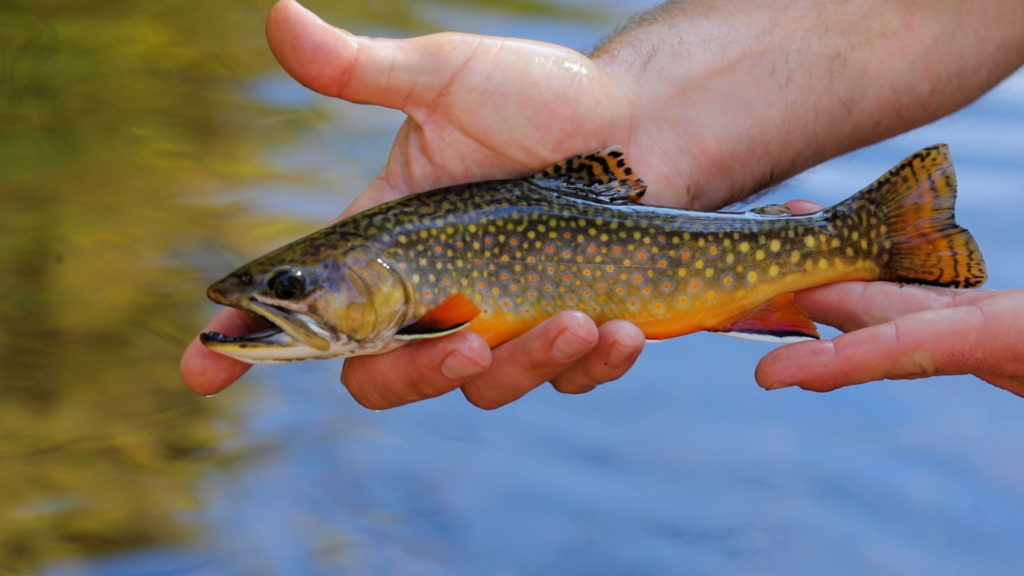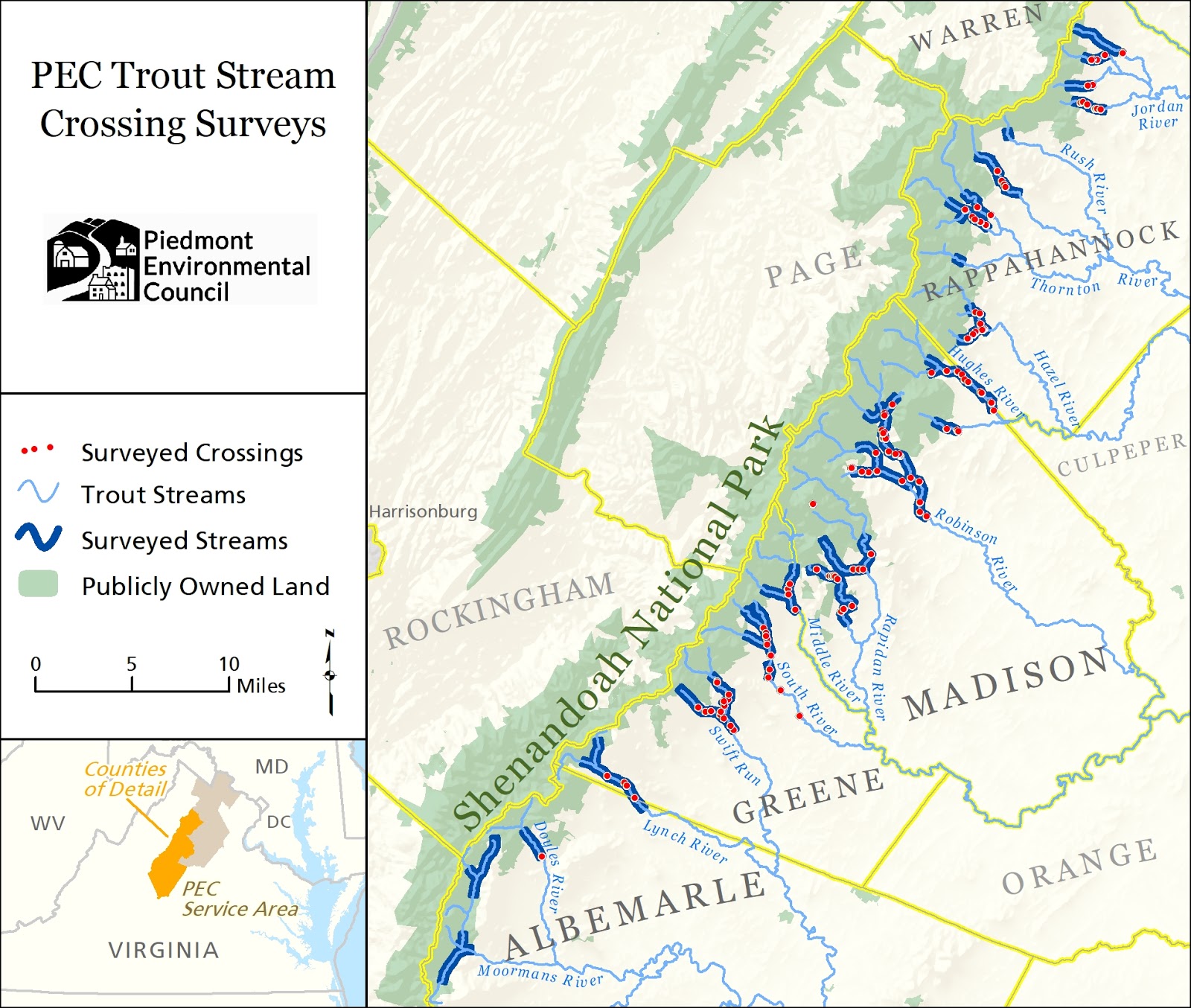The job of our rivers naturally is to move the mountains to the sea. Dams and other barriers like culverts and low-water crossing on public and private roads can disrupt natural stream flow, disconnect fish and wildlife habitats and impair water quality. Removing unnatural barriers and disruptions is particularly important for conserving our waterways, restoring aquatic habitat and creating a healthy stream flow.
PEC is working to improve stream health and connectivity by removing or replacing culverts in the upper Rappahannock watershed with more wildlife-friendly versions. So far, we have reconnected nearly 20 miles of stream habitat for the brook trout and other native wildlife!
Interested in pursuing stream restoration on your property? Contact trout@pecva.org for more information.
View this StoryMap full-screen →
A Collaborative Effort
PEC is leading a regional initiative of conservation organizations, federal agencies, and the Virginia Department of Transportation to restore and reconnect habitat for the Eastern brook trout (Salvelinus fontinalis) and other aquatic organisms in headwater streams that border Shenandoah National Park.
Over the past decade, PEC has identified physical barriers that are preventing brook trout and other aquatic species from moving through these headwater systems. Moving from analysis to action, PEC has prioritized projects based on habitat connectivity and water quality improvement and pursued a series of pilot projects that have successfully set the stage for scaling up a more broad-based stream and habitat restoration strategy along the eastern side of the Blue Ridge.
About the Brook Trout
The brook trout is an indicator species that depends on cold, clean water and thrives best in free-flowing headwater streams. Physical barriers, such as undersized road-stream crossings, can impede fish passage by blocking upstream migration to spawning, better food and coldwater refuge during warmer summer months.

PEC recognizes that restoring trout habitat goes beyond protecting charismatic species like the brook trout, American eel, and other freshwater organisms; our work also improves water quality and climate resiliency, which benefits the larger Chesapeake Bay Watershed.
Additionally, the mountain communities and families that reside in this region have deep ties to this iconic fish, and anglers travel long distances to fish these pristine mountain streams.
Crossing Survey
PEC partnered with Trout Unlimited in 2013 to survey barriers to aquatic organism movement in Rappahannock, Madison, Greene and Albemarle counties. The surveys were made possible from the U.S. Fish and Wildlife Service National Fish Passage Program. An online map of the survey data can be found at pecva.org/troutmap.
Of the 141 road-stream crossings assessed:
- Nearly half provided no or reduced passage;
- 75 were owned by VDOT; and
- 66 were in private ownership.

Restoring Connections – By Eliminating Barriers
Trout Streams
Good News for the Brook Trout
Teaming Up to Save the “Brookie”
PEC has worked to build robust partnerships with a diverse set of agencies, non-profits, private consultants and funders in order to propel this initiative forward: Friends of the Rappahannock, Trout Unlimited, US Fish & Wildlife Service (USFWS), VA Department of Wildlife Resources (DWR), National Fish & Wildlife Foundation (NWFW), Culpeper Soil and Water Conservation District (CSWCD), VA Department of Forestry (DOF), Nimick Forbesway Foundation, PEC’s Krebser Fund for Conservation in Rappahannock County, The Campbell Foundation, Shenandoah National Park (SNP), Shenandoah Streamworks, Ecosystem Services LLC, VA Department of Transportation (VDOT), private landowners and many others.

